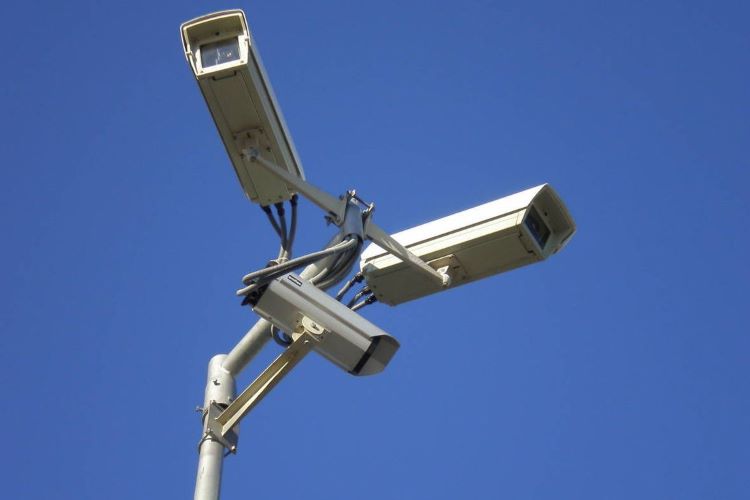
After facing prolonged controversies and political opposition, the Kerala’s AI Camera project in Kerala became operational on June 5. As part of the Safe Kerala Project, 726 cameras were installed throughout the state, enabling the motor vehicles department to impose penalties for traffic offenses.
The AI cameras use programs to analyse images and videos, with computational photography serving as their core. In Kerala, these cameras are being used to detect various traffic violations such as helmet-less riding, triple riding on two-wheelers, failure to use seatbelts, mobile phone use while driving, jumping red signals, over speeding, dangerous driving, and illegal parking.
Remarkably, within just four days of the activation of the Rs 232 crore AI camera project, the motor vehicles department reported a significant fall in traffic accident deaths. The daily average of 12 fatalities dropped to 7.
READ I Generative AI: The miracle that is shaping the global economy
Road accidents in India
The UN General Assembly has set an ambitious target to halve the number of deaths and injuries world-wide from road traffic crashes by 2030. However, in the past decade, road crashes in India have claimed 1.3 million lives and injured over 5 million. The trend continues, with the exception of the period of the pandemic lockdown.
According to the Road Safety Report 2021 released by the Union Ministry of Road Transport & Highways in May 2022, states and union territories reported a total of 412,432 road accidents, resulting in 153,972 fatalities and causing injuries to 384,448 individuals.
While road accidents decreased by 8.1% in 2021 (largely due to pandemic-related travel restrictions), the severity of accidents, measured by the number of deaths per 100 accidents, increased from 36.0 in 2020 to 37.3 in 2021. This is a matter of grave concern. States like Madhya Pradesh, Karnataka, Kerala, Tamil Nadu, and Telangana continued to have the highest share of accidents and fatalities in 2021.
Over speeding remains the major cause of accidents and deaths, accounting for 71.7% of road accidents, 69.6% of total deaths, and 72.9% of total injuries in 2021. Two-wheelers accounted for the highest number of fatal road crashes in 2021 (69,240 deaths), contributing to 44.5% of total road accident deaths. Of these, 46,593 deaths were attributed to not wearing helmets, with 32,877 (70.6%) being riders and 13,716 (29.4%) pillion riders. The age group of 18-45 recorded the largest number of deaths in 2021, accounting for approximately 67% of total accidental deaths.
Road accident scenario in Kerala
Despite occupying only 1.18% of India’s total land area and having 2.76% of the country’s population (with a density of 860 people per sq km), Kerala ranks fifth in terms of road accidents, accounting for 8.1% (33,296) of the total.
According to Kerala police data, a staggering 23,512 lives were lost in road accidents in the state between 2017 and 2022. On an average, 12-15 lives are claimed by road accidents each day, with around 70% of the victims being young people. In 2022 alone, there were 43,910 road accidents, resulting in 4,317 fatalities, 34,638 serious injuries, and 14,669 minor injuries. According to the State Crime Records Bureau, over speeding and rash driving accounted for 57% of the accidents in 2022.
Out of the 1.66 crore vehicles in Kerala, 1.08 crore (65%) are two-wheelers, which continue to have a high accident rate compared with the national average. In 2022, Kerala reported 13,334 two-wheeler accidents, accounting for approximately 61% of the total. Data from various cities reveals that up to 82% of those killed in two-wheeler accidents were not wearing helmets. A study by Exide Life Insurance indicates that 57% of two-wheeler users across the country neglect the importance of wearing helmets, with an even higher rate of 74% for pillion riders.
The sharp rise in road accidents in Kerala can be attributed to several factors, including the lack of proper safety gear and poor, unscientific infrastructure. Insufficient enforcement of traffic rules, high population density, reckless driving, widespread substance abuse (Kerala has the highest per capita alcohol consumption in India), potholes, inadequate road design, narrow roads without dividers, and the substantial increase in motorised and non-motorised vehicles also contribute to the high fatality rate on the roads. Addressing these issues is crucial to achieving a reduction in road fatalities.
Kerala’s AI camera project
Since the launch of AI cameras, the transport department has observed a decrease in deaths caused by accidents and traffic violations. On the day of the official inauguration of the AI cameras, violations dropped from 4.5 lakh cases to 2.8 lakh cases, and on June 5, this number further decreased to 1.93 lakh.
The Kerala government’s decision on June 15 to revise speed limits for vehicles on national and state roads is worrying and can offset the gains from the installation of AI cameras. Under the new rules, vehicles with up to nine seats will be permitted to travel at speeds of 110 kmph on six-lane national highways and 100 kmph on four-lane national highways. On other highways such as MC roads and four-lane state highways, the speed limit is set at 90 kmph.
The maximum speed limit for two-wheelers has been reduced from 70 kmph to 60 kmph, while the speed limits for three-wheelers and school buses remain unchanged at 50 kmph. These changes are based on a government of India notification from April 6, 2018, which was invalidated by the Madras High Court and challenged by the ministry of transport in the Supreme Court of India. The new speed limit rule in Kerala is expected to take effect from July 1.
Global experience shows that an increase in average speed directly correlates with the likelihood and severity of crashes. For instance, a 1% increase in mean speed results in a 4% higher risk of fatal crashes and a 3% higher risk of serious crashes. The risk of pedestrian fatalities escalates rapidly (4.5 times) from 50 km/h to 65 km/h. In car-to-car side impacts at 65 km/h, the fatality risk for car occupants is 85%.
Considering that speeding is a leading cause of accidents in India, it is crucial to view the decision to increase speed in this context. Furthermore, Section 129 (wearing of protective headgear) of the MV Amendment Act 2019 mandates that every child above the age of four being carried on a motorcycle must wear a helmet.
Additionally, the Motor Vehicles Act prohibits more than two people from traveling on a two-wheeler. However, succumbing to public pressure, the Kerala transport minister has allowed a child below the age of 12 to ride with two adults (totaling three people) without a helmet, thus violating two sections of the MV Act 2019. There is an urgent need to reverse both of these recent decisions.
Merely relying on AI cameras and penalties will not effectively reduce the high percentage of road fatalities in Kerala. Alongside addressing the major causes of road accidents, it is essential to prioritise awareness and voluntary compliance among road users in strictly adhering to road rules. These factors are prerequisites for an reducing the number of road crashes and fatalities in Kerala.
George Cheriyan is Director of Centre for Environment and Sustainable Development India, a national NGO in Special Consultative Status with UN-ECOSOC, and accredited with UNEP & UN ESCAP. CESDI is also a member of South Asia Network on SDGs.

